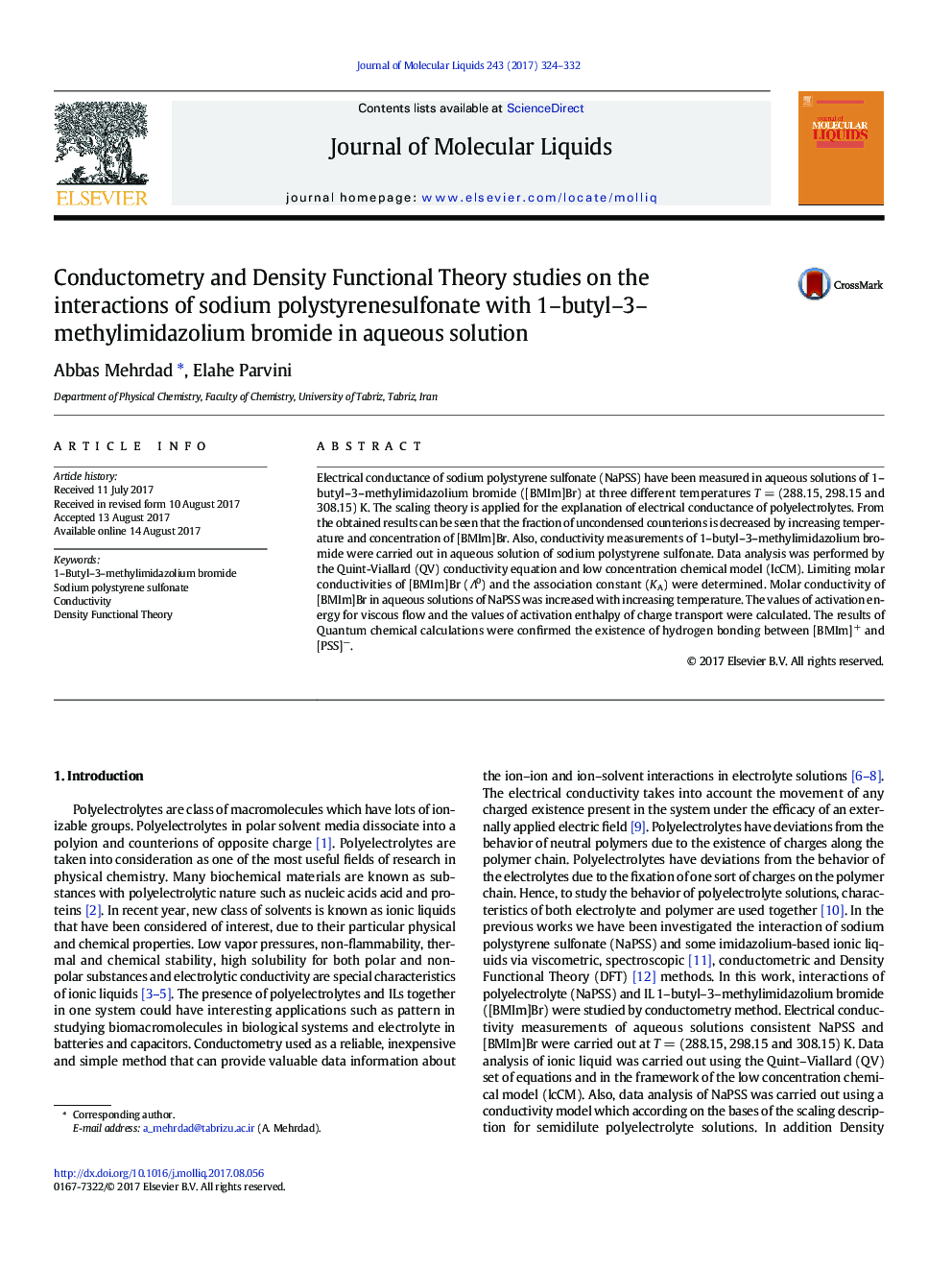| Article ID | Journal | Published Year | Pages | File Type |
|---|---|---|---|---|
| 5407983 | Journal of Molecular Liquids | 2017 | 9 Pages |
Abstract
Electrical conductance of sodium polystyrene sulfonate (NaPSS) have been measured in aqueous solutions of 1-butyl-3-methylimidazolium bromide ([BMIm]Br) at three different temperatures TÂ =Â (288.15, 298.15 and 308.15) K. The scaling theory is applied for the explanation of electrical conductance of polyelectrolytes. From the obtained results can be seen that the fraction of uncondensed counterions is decreased by increasing temperature and concentration of [BMIm]Br. Also, conductivity measurements of 1-butyl-3-methylimidazolium bromide were carried out in aqueous solution of sodium polystyrene sulfonate. Data analysis was performed by the Quint-Viallard (QV) conductivity equation and low concentration chemical model (lcCM). Limiting molar conductivities of [BMIm]Br (Î0) and the association constant (KA) were determined. Molar conductivity of [BMIm]Br in aqueous solutions of NaPSS was increased with increasing temperature. The values of activation energy for viscous flow and the values of activation enthalpy of charge transport were calculated. The results of Quantum chemical calculations were confirmed the existence of hydrogen bonding between [BMIm]+ and [PSS]â.
Related Topics
Physical Sciences and Engineering
Chemistry
Physical and Theoretical Chemistry
Authors
Abbas Mehrdad, Elahe Parvini,
